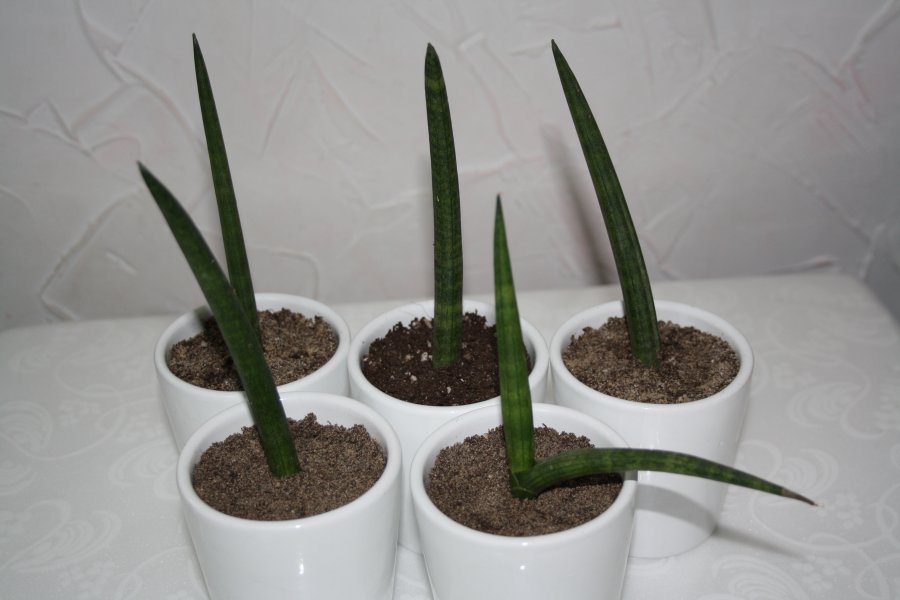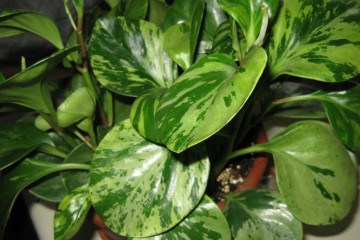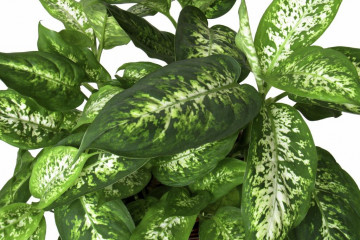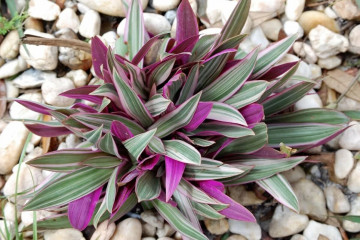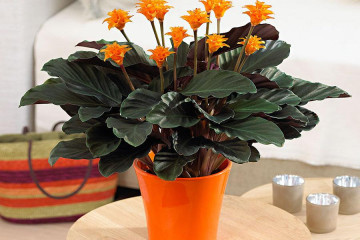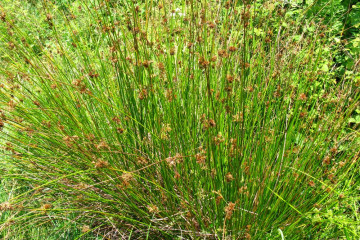Sansevieria cylindrical - home care
Content:
Sansevieria cylindrical is one of the most exotic species of this genus of plants. A beautiful flower with long erect xiphoid leaves is in great demand among gardeners and, moreover, does not require special care.
What does the cylindrical sansevieria look like, which family does it belong to?
Sansevieria cylinder or cylindrical (Sansevieria Cylindrica) is popularly called simply - Pike tail. A plant in the Asparagus family is characterized by long tubular leaves that grow straight out of the ground. They are very smooth to the touch and shiny due to the fact that they are covered with a dense wax layer.
Common varieties
The most famous and popular varieties of this plant species are:
- Sansevieria Velvet Touch (Velvet Touch) - got its name because of the velvet-feeling stems.
- Sansevieria Bacularis (Sansevieria Bacularis) is a bush with dense dark green tubular leaf plates that do not close on the stem, but grow out of the ground.
- Sansevier Skyline - has smooth and shiny leaves, on which dark stripes are present.
- Sansevieria Twist - can grow up to 50-60 centimeters, according to the external description it is very similar to the cylindrical appearance.
- Sansevieria Spaghetti - leaves are rounded, with small grooves along their entire length.
- Sanseviera Mikado is a very rare cultivar with thick, fleshy leaves and dark green vertical lines on them.
Healing properties
The great advantage of the sansevier is that it has medicinal properties:
- normalizes blood pressure;
- improves the overall well-being of the body and strengthens the immune system;
- treats colds;
- used externally to treat inflammation and other skin diseases;
- normalizes the work of the gastrointestinal tract.
Briefly about the history of appearance
The plant is native to the South African territories. At the beginning of the 20th century, sansevieria was exported to Europe, from where it migrated as an indoor flower throughout the rest of the world.
Features of caring for a plant at home
It is easy to care for a cylindrical sansevieria, the main thing is to create certain climatic conditions in the room where it grows.
Temperature
The most comfortable temperature for a flower is + 10 ... +25 degrees. The bush normally tolerates a sharp cold snap, but in the heat it is better to put the pot in a ventilated area.
Lighting
The flower has no special requirements for lighting. It is better to keep it in diffused light so that the sun's rays cannot burn the fleshy decorative leaves of the sansevier.
Watering
During the growing season, the bush needs to be watered every 7-10 days, but during the dormant period, it is enough to slightly moisten the soil once a month.
Spraying
Sansevieria care does not require a spraying procedure. This can cause leaf rot due to water entering the sinuses.Better to wipe the plates with a damp cloth.
Humidity
It is desirable to keep the moisture readings at an average level. If necessary, you can increase it by adding water to the pan of the pot.
Priming
The flower prefers slightly acidic soil. The substrate can be prepared at home. To do this, you need to mix loose soil, sand and a small amount of humus.
Top dressing
To fertilize the plant, it is necessary to choose special complex mineral fertilizing intended for succulents. In the soil, you need to constantly replenish the content of potassium and phosphorus.
When and how it blooms
The flowering of the cylindrical sansevier is almost imperceptible. The inflorescences are in the shape of a brush and are located on a long and erect peduncle. In length, it is the same as the leaves of the flower, but sometimes it is even higher. Small flowers with white-cream petals are tubular. Some varieties have pale pink flowers.
The bush blooms for only about a week. Already 5-8 days after the blooming of the buds, they begin to close back and fall off.
How does cylindrical sansevieria reproduce?
This species can multiply in several ways, all of them are easy to use.
Germinating seeds
Reproduction of sansevieria by cylindrical sowing of seeds is practically not used in home floriculture. Sow the seeds into boxes of succulent substrate. They need to be deepened by 1-2 centimeters. Then pour over and cover with plastic wrap. The first shoots will appear in a month.
Rooting cuttings
To propagate the plant by cuttings, you need to cut off a part from the side leaf about 10 centimeters long. The cuttings are buried in a box with soil mixture, watered and covered with foil.
Air layering
It is possible to propagate the flower with secondary rosettes, this method is similar to rooting of lateral layers. In the spring, the rosettes are separated from the bush and planted in a separate pot.
Transfer
The need for a transplant depends on the growth of the bush. Young sansevieria is transplanted every year in the spring, and an adult one every 3 years.
Possible growing problems and diseases
Sansevier practically does not suffer from pests and diseases, but occasionally problems still arise.
The flower sheds buds and leaves
This is most often due to the dry indoor air. Sometimes the flower just lacks some minerals in the soil.
Leaves turn pale
This condition occurs due to a lack of feeding and lighting. It is better to keep the bush in slightly diffused light, but not in the shade.
The tips of the leaves dry
The edges of the leaves dry out due to the dry air and high indoor temperatures. Sansevieria does not like heat, so it is worth taking care of a suitable growing room in advance.
The lower leaves fall
This is due to excessive watering and poor quality water. Too cold liquid can quickly destroy the bush.
Pests
Of the pests, the flower can infect a spider mite, which twists a barely noticeable cobweb on the leaves. Insects love to feast on fleshy leaves, from which they dry up and die off.
Signs and superstitions
Since ancient times, Sanseviers have been attributed to various magical properties due to the fact that they have many medicinal properties. It is believed that the plant brings peace and prosperity to the house, protects household members from quarrels and troubles.
However, there is one famous superstition associated with sansevieria. Because of the sharp leaves, she was nicknamed the Mother-in-law's tongue and it is believed that the plant promotes gossip and sows misunderstanding among the inhabitants of the house.
Sansevieria cylindrica is distinguished by its decorative leaves, which, although they do not differ in variegation, have a refined and elegant look. Easy care only contributes to the popularity of this variety in home floriculture.



